Last-Minute NYC Holiday Gift Guide 🎁
We’ve created a holiday gift guide with presents for the intrepid New Yorker that should arrive just in time—


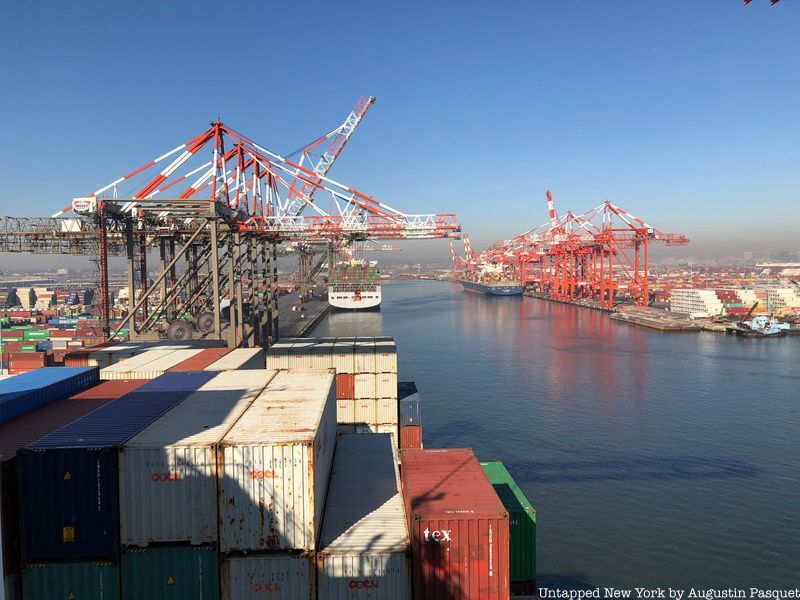
Port Newark-Elizabeth Marine Terminal — commonly referred to as “Port Newark” or “Port Elizabeth” — is a staple in the international shipping community, serving as a major component of the Port of New York and New Jersey. The terminal consists of Port Newark and the Elizabeth Marine Terminal, both of which serve as the principal container ship facility for goods entering and leaving the New York Metropolitan Area. Its legacy stretches far back, having been formed during the early 20th century. As one of the largest shipping ports in the United States, the Port Newark-Elizabeth Marine Terminal has many secrets ready to be discovered including a church dedicated to mariners hidden between its towering shipping containers!
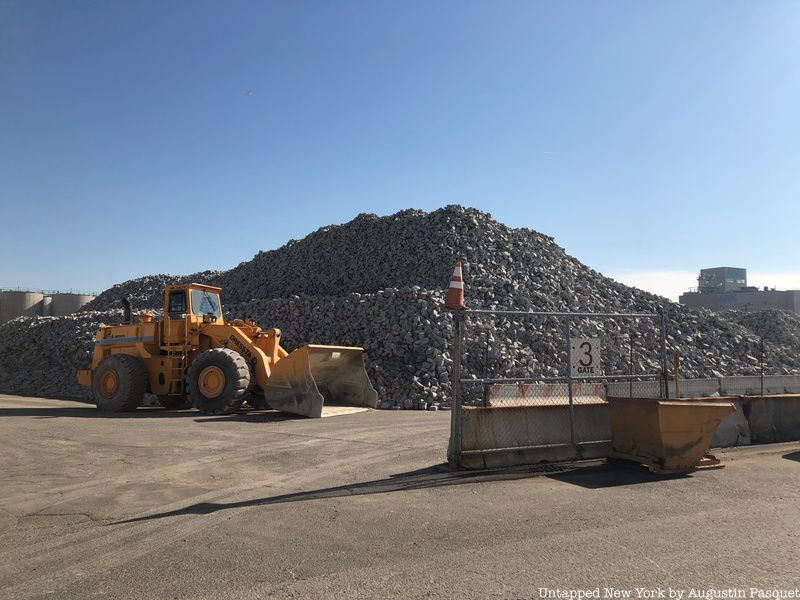
The basis for Port Newark began during the 1910s when the city of Newark began to excavate an angled shipping channel in the northeastern quadrant of the Newark Meadows wetland. During World War I, work on the port’s channel and terminal facilities grew at an accelerating speed, with around 25,000 troops stationed at the Newark Bay Shipyard. More progress was made when the Newark Bay Channels were authorized by the Rivers and Harbors Act of 1922. Following the move of ownership to the Port Authority in 1948, the Port Newark-Elizabeth Marine Terminal would begin to modernize and expand southward.
Progress did not stop then. A new shipping channel was dredged to straighten Bound Brook—the tidal inlet forming the boundary between Newark and Elizabeth—which would be used to form the Elizabeth Channel. The Elizabeth Marine Terminal, which would later be built along the channel, has served as an essential model for the port’s future terminals; its Sea-Land Container Terminal became the prototype for all subsequent ones.
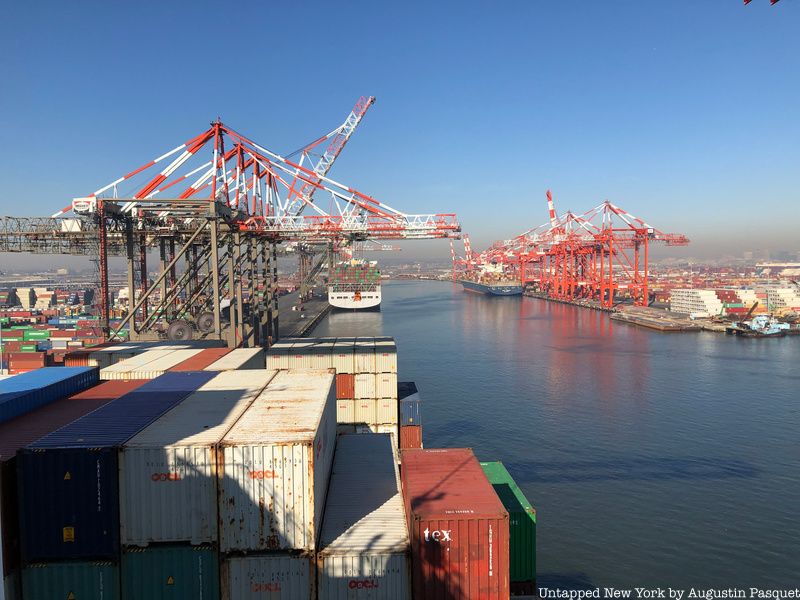
Today, Port Newark-Elizabeth Marine Terminal — despite being fully located in New Jersey — is jointly operated with the state of New York through the Port Authority of New York and New Jersey. For years, the Port Authority has worked to efficiently manage Port Newark, sparking higher rates of employment, tenant occupancy, and business opportunities. However, the two states’ simultaneous control over Port Newark wasn’t always set in stone. During the early 1900s, a great deal of conflict existed between New York and New Jersey over maritime activities in the Hudson and East rivers. As a result, the two states often fought over jurisdiction rights for the area’s waterways (much like the battle over Ellis Island later!). Eventually, the fighting came to an end with the signing of a compact on April 30, 1921 between New York and New Jersey, which created the Port of New York Authority — later renamed the Port Authority of New York and New Jersey in 1972 to better reflect the organization’s interstate connections.
The Port Authority stands out as having been the first inter-state agency created under the Constitutional Clause, allowing for compacts to be created between states. With the compact, the Port Authority began to develop and modernize the region’s port district. In 1948, it was given the responsibility of operating and repairing Port Newark, which had run into disrepair during the Great Depression and the two World Wars. By 1951, Port Newark became a true force to be reckoned with, serving as a modern terminal with 21 berths and a 35 foot channel capable of accommodating the largest ships of the time.
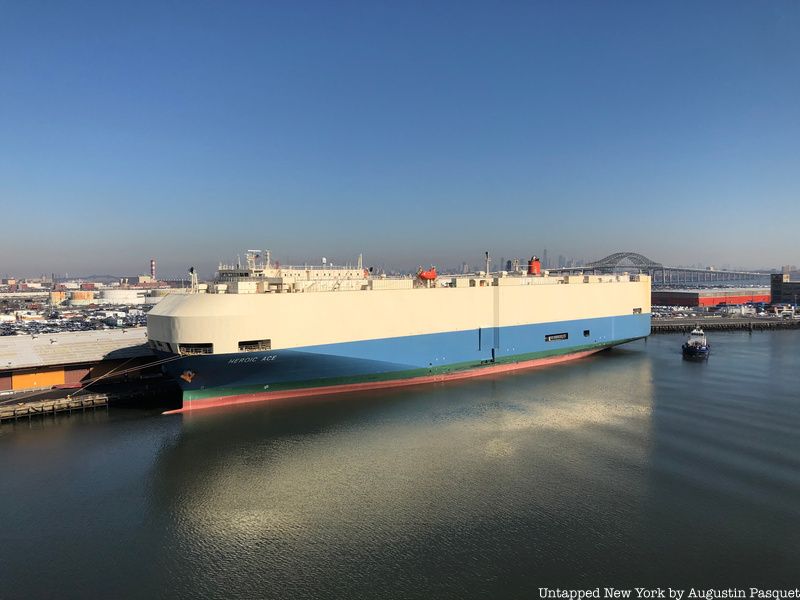
The SS Ideal-X was the first commercially successful container ship. It from the Port of Newark to the Port of Houston, Texas, on April 26th, 1956 and was an experiment to use standardized cargo containers which would be stacked and unloaded to a compatible truck chassis. To accomplish this, trucking executive Malcolm McLean installed a special spar deck with longitudinal slots to which the bodies of 58 tractor trailers were attached.
The SS Ideal-X was originally built by the Marinship Corporation during World War II — then known as Potrero Hills — before its purchase by the Pan Atlantic Steamship Company (now named SeaLand). Beginning in 1955, modifications were made to the vessel’s structure, allowing it to carry shipping containers. Though the SS Ideal X served as one of the world’s first container ships, its run would be short-lived. After being purchased in 1959 by Bulgarian owners and given the new name Elemir, the ship suffered damage during heavy weather on February 8, 1964. As a result, it was quickly sold to Japanese breakers and scrapped entirely a few months later on October 20, 1964, in Hirao, Japan.
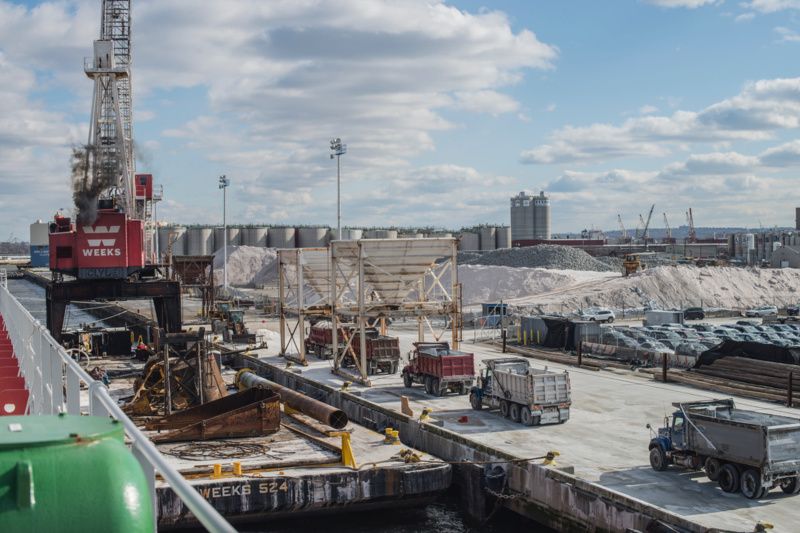
On August 15, 1962, the Port Authority of New York and New Jersey opened the first-ever container port in the world, Elizabeth-Port Authority Marine Terminal in Elizabeth, New Jersey. Today, the port serves as the second half of the Port Newark-Elizabeth Marine Terminal. Currently, Port Elizabeth is APM Terminal‘s largest terminal on the east coast of North America.
In addition, it offers the largest reefer capacity in the Port of New York and New Jersey, with its four ZPMC post-Panamax cranes capable of handling vessels up to 23 containers wide on-deck. It is located around one mile off exit 13A on the New Jersey Turnpike.
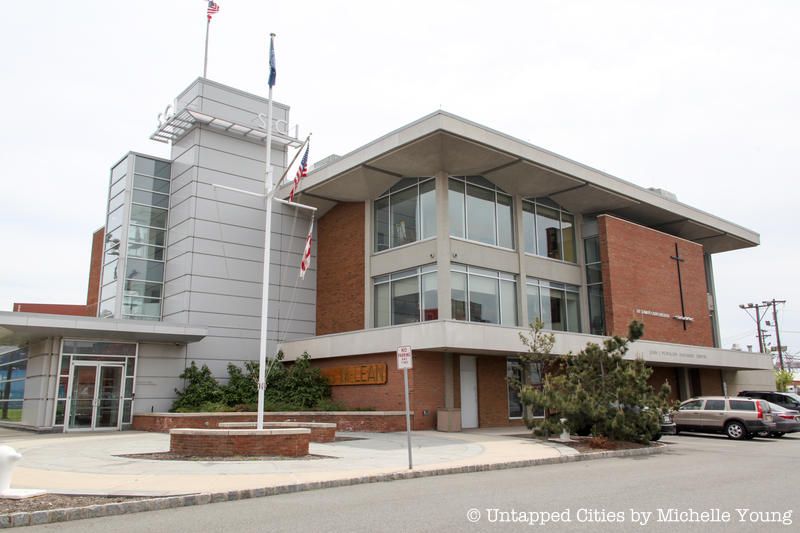
Hidden amidst the bustling 1,000-acre Port-Newark-Elizabeth Marine Terminal is the Seamen’s Church Institute (SCI), an Episcopal Church-affiliated organization that serves mariners by providing them with education, pastoral care, and legal advocacy. Founded in 1834, the Institute is the largest and most comprehensive mariner’s agency in the United States. Every year, the organization’s chaplains visit over 2,000 vessels in the Port of New York and New Jersey and along the American inland waterway system. Since 1961, the Seamen’s Church Institute has operated a seafarer’s center in the Port of Newark. When the Institute first opened, entire ships were able to disembark in the port’s dock, but that has since changed, due to more stringent visa requirements. As a result, SCI chaplains, when requested, will now head onto the ships themselves, warmly greeting mariners to the United States. The Institute’s current chaplain is of Filipino descent, reflecting that more than 65% of the 1.5 million international mariners hail from the Philippines.
Today, the Institute can be found in Port Newark past the curve in the road along Export Street. The current center was constructed between 1964 and 1965 as an expansion on a previously existing one-floor structure that has since been destroyed. In 2009, the center underwent a $10 million renovation in honor of the organization’s 157th anniversary. Though the organization’s chapel no longer holds regular services, it remains an important symbol of its work. The center provides mariners with computers, recreational spaces, and SIM cards for calling home — given that 70% of all international ships to the U.S. come through the port. In addition, the Institute coordinates the annual Christmas at Sea program, which gives knitted hats, scarves, and toiletries as holiday gifts to mariners.
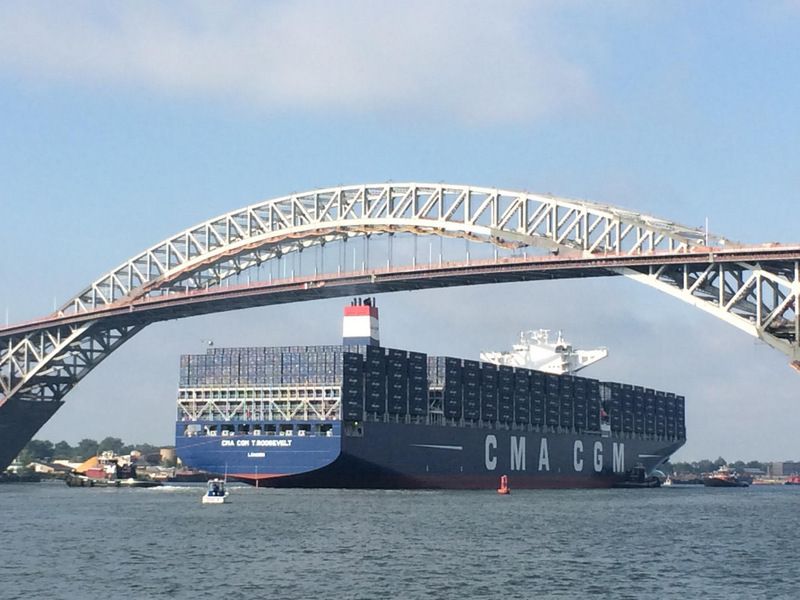
On September 7th, 2019, at the APM Terminal in Elizabeth, the 14,414 TEU CMA CGM T. Roosevelt — the largest cargo container vessel to ever come through the Port of New York and New Jersey — made its maiden voyage to Port Newark under the Bayonne Bridge. At 12,028 feet tall, the T. Roosevelt is four times larger than the Statue of Liberty and is four football fields in length. This monumental moment marked the completion of the Bayonne Bridge Navigational Clearance Project, which forever altered the Port of Newark’s shipping capabilities.
The Project involved the raising of the Bayonne Bridge’s clearance capacity from 151 feet to 215 feet, allowing for the accommodation of 18,000 TEUs (Twenty-Foot Equivalent Units used to measure the capacity of container ships). Prior to the rising of the bridge, only ships with a capacity of 9,800 TEUs or less were capable of passing through the port terminals of Elizabeth, Newark, and Staten Island. The raising of the bridge became necessary following the completion of the $5.2 billion 2016 Panama Canal expansion, which involved the addition of a third set of locks. Had expansions not been made to the bridge, the Port Newark-Elizabeth Marine Terminal risked the loss of a significant amount of their shipping business to other ports along the East Coast.
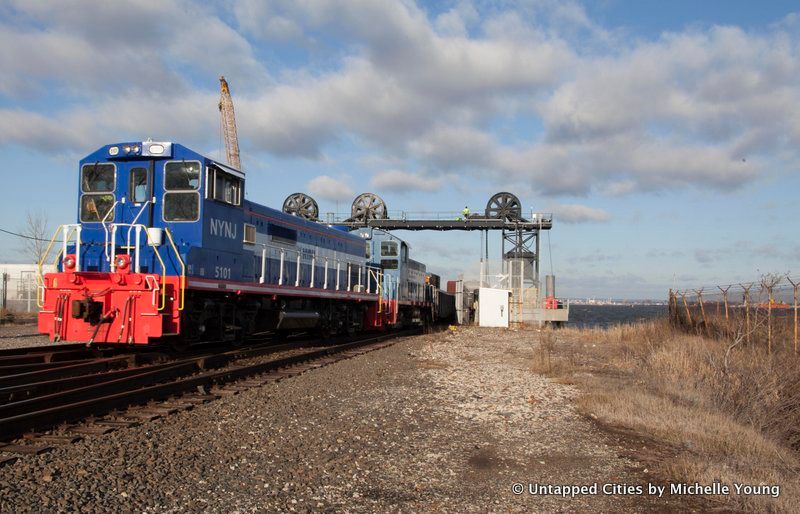
Over the years, rail facilities have played a key role in the daily operations of the Port-Newark Elizabeth Marine Terminal. Currently, ExpressRail provides dockside trans-loading operations at each of the port’s major container terminals. ExpressRails has worked to provide efficient and reliable on-dock services, a sustainable mode of transportation for cargo bound for Chicago, Ohio Valley, New England, and Eastern Canada.
ExpressRail also connects to two Class One railroad partners — CSX and Norfolk Southern. Besides providing services at Ports Newark and Elizabeth, ExpressRail also is a key component of shipping operations in Staten Island and Port New Jersey. Freight that comes to and from the Port Authority’s floating barge rail line (pictured above) that connects from Sunset Park, Brooklyn to Greenville New Jersey go in part to the cargo freighters at Port Newark as well.
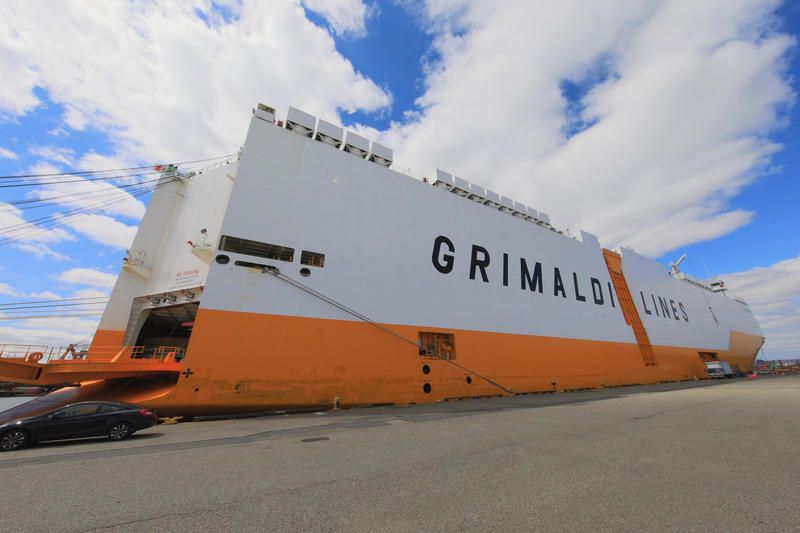
Normally, when one thinks about a christening, the act is most often associated with a religious practice done to babies as they enter into the Christian faith. However, the practice is also commonly done to ships across the world, intended to invite good luck during voyages. A typical christening event for ships will involve the breaking of a champagne bottle over the bow of the ship as its name is read aloud and launched for the first time into the ocean.
On April 18, 2018, The Grande New York, a pure car and truck carrier part of the Grimaldi Group’s new fleet of ships, was christened in the Port of New York and New Jersey at the Port Newark Auto Marine Terminal. With a length of 199,900 meters and a gross tonnage of 63.000 tonnes, The Grande New York is extremely flexible, being equipped with four hoistable decks that allow transportation for any type of rolling cargo up to 5.2 meters high. Deployed on the North American-Mediterannean route, the ship performs remarkably well from an environmental standpoint, being fitted with an electronically controlled main engine and scrubber to reduce its NOx and SOx emissions. The Grande New York was blessed by Father Peter Haldas of St. John Paul II, with its godmother being Amanda Matilda Cuomo Cole, granddaughter of former NY Governor, Mario Cuomo, and niece of current NY Governor Andrew Cuomo. The ceremony was attended by several maritime authorities, customers, port operators, and managers of Grimaldi Group among others.
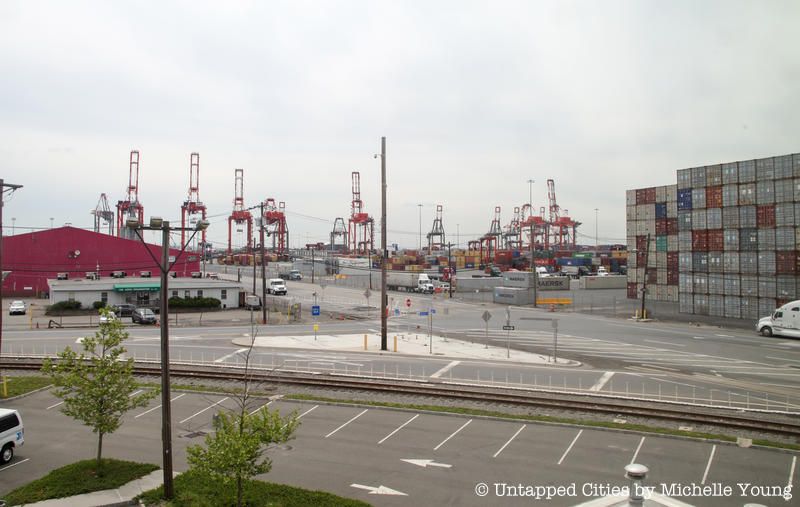
Located close to one of the largest cities in the world, it is no wonder that Port Newark’s capacity would reflect its bustling surroundings. In 1985, Port Newark-Elizabeth Marine Terminal was the busiest cargo port in the world, though it has since lost the title to the Port of Shanghai. Even so, Port Newark remains a force to be reckoned with in the United States.
Today, it still receives the most first port of calls — 72% of all first port of calls, more, than any other East Coast port. In 2019, it was surpassed in volume only by the ports of Los Angeles and Long Beach. In 2019, the largest commodity imported into the Port of Newark in terms of general cargo were beverages, plastics and furniture. The largest exports were wood and vehicles/parts. Phoenix/Beehive Beverage, which was the largest Heineken distributor in the world, was originally based at Port Newark until it expanded as well to Brooklyn to import beer to the Red Hook Container Terminal.
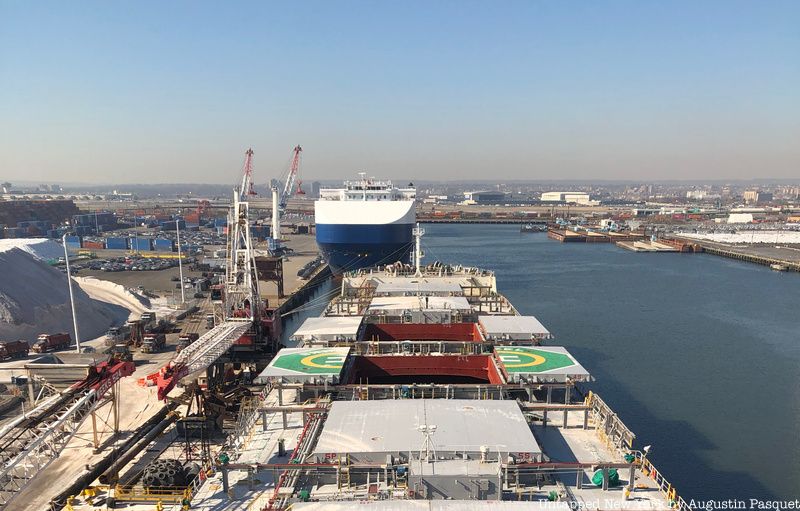
On their way from locations across the globe, container goods most often pass through The Narrows and Kill Van Kull to enter Newark Bay, though some ships will go through Arthur Kill. The Narrows began forming over 18,000 years ago before the end of the last Ice Age, following the deposition of Harbor Hill Moraine. Before The Narrows, Staten Island and Brooklyn were connected — the Hudson River instead drained through the Raritan River, which went through the eastern side of Watchung Mountains to Bound Brook in New Jersey before entering the Atlantic Ocean in Raritan Bay. However, a build-up of water in the Upper New York Bay allowed the river to break through, forming The Narrows. Later, The Narrows would become essential to the American Revolution and was used in 1776 by William Howe’s British forces to push George Washington’s army back at the Battle of Long Island. Today, The Narrows not only serves Port Newark but can be crossed on the Verrazzano-Narrows Bridge, the longest suspension bridge in the U.S.
As a three-mile tidal strait between Staten Island, New York, and Bayonne, Kill Van Kull connects Newark Bay with the Upper New York Bay. It’s name reflects the early Dutch colonization of the region. The name Kill Van Kull is the anglicized form of “achter kill” meaning “back channel,” — a reference to its location behind Staten Island. Like The Narrows, Kill Van Kull’s importance spans back to the colonial era. At the time, it played a key role in travel from New York to the South, providing access for ferries which carried passengers to coaches stationed at Elizabethtown.
Next, check out the Top 1o Secrets of NYC’s South Street Seaport!
Subscribe to our newsletter